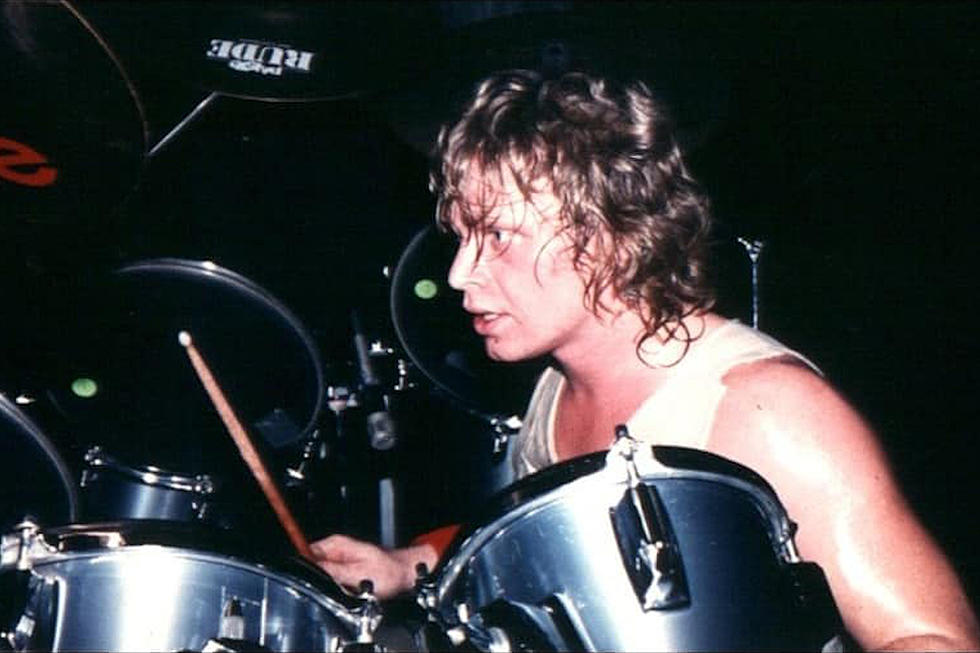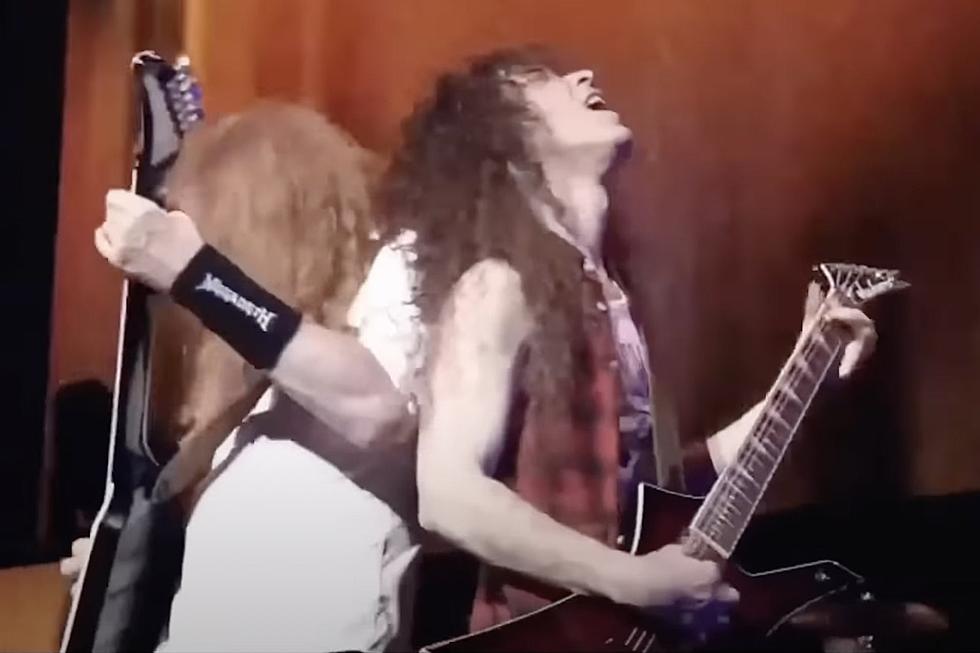
How Megadeth Finally Unlocked Their Potential on ‘Rust in Peace’
After being so rudely ejected by Metallica on the eve of that group’s career take-off, Dave Mustaine licked his wounds and quickly set about creating a new band in his image to be called Megadeth, vowing all the while that failure was simply not an option.
And yet, for several years thereafter, failure seemed like the only possible outcome as Mustaine’s personal demons continually threatened to sabotage his abundant musical talents — until Megadeth finally got it together with the release of Rust in Peace on Sept. 24, 1990.
Looking back, one could see that Megadeth’s first album, Killing is My Business … and Business is Good!, had been recorded on a shoestring budget that somewhat compromised its potential. Their second, Peace Sells … But Who’s Buying?, succeeded almost despite itself as Mustaine’s fast-improving songwriting prowess overcame his worst self-destructive lifestyle.
Their third, So Far, So Good, So What?, had been chaotic and disappointing; its creation and overall consistency wracked by Mustaine and his bandmates’ rampant drug use on the way to a complete implosion that saw most of its supporting tour canceled outright.
All this evidence gave cynics ample justification to forecast Megadeth’s imminent demise as Mustaine and long-serving bassist Dave Ellefson wrestled with yet another round of auditions to replenish their ranks after the acrimonious dismissal of guitarist Jeff Young and drummer Chuck Behler. Conversely, anyone still keeping faith with Megadeth’s future prospects likely never dreamed that the ragged glimpses of genius that had surfaced through the quagmire of So Far, So Good... could segue so quickly and completely to the disciplined, almost clinical (but still thrilling) thrashing display put on by Rust in Peace.
Forget Metallica’s …And Justice for All, released all the way back in 1988. In 1990, Rust in Peace became the last word in state-of-the-art thrash metal, thanks to Mustaine and Ellefson’s overdue pairing with musicians of higher musical caliber in drummer Nick Menza and guitar shredder extraordinaire Marty Friedman.
Listen to Megadeth's 'Holy Wars ... The Punishment Due'
In Friedman, Mustaine, in particular, finally found a six-string foil whose talents were arguably even technically more polished than his own, and so Rust in Peace turned into an absolute master-class in heavy metal guitar playing.
Right off the bat, the bar was set incredibly high by the two-part classic, “Holy Wars... The Punishment Due” — the first, thrashing half of which was inspired by the ongoing religiously motivated conflicts in Northern Ireland, and the second, more deliberate and sinister half by the Punisher comic book character (beautifully inter-connected by a stunning Arabian run from Friedman).
By comparison, the next number, “Hangar 18,” was unusually linear, giving Rust in Peace its most radio-friendly offering, before the album once again enjoined its ambitious mission statement on the ruthlessly complex “Take No Prisoners” and occult-themed “Five Magics,” introduced by a memorable bass build-up from Ellefson.
Side two was equally impressive, escalating steadily from the head-down, fists-up moshing of “Poison Was the Cure,” to the darkly melodic witchy tale of “Lucretia,” and then culminating in another high water mark in Megadeth’s career via the almost fretboard maelstrom of “Tornado of Souls,” where Mustaine and Friedman jousted with almost superhuman intricacy surrounding the latter’s jaw-dropping solo break. Beyond this, all that was left to do now was to wind down with the instrumental interlude, “Dawn Patrol,” and the closing apocalyptic statement of the once again two-dimensional “Rust in Peace ... Polaris.”
When all was said and done, listeners were left breathless by such frantic virtuosity, and most critics seemed to feel the same way, as they proceeded to ladle heaps of praise all over Megadeth’s fourth album. This, in tandem with Megadeth’s elevated group performance on stage, as they hit the touring trail around the globe, inevitably drove ever more fans, old and new, into record stores to pick up Rust in Peace, pushing it into the Billboard 200's Top 25, the U.K. Top 10, and onwards past the platinum sales plateau.
Most important of all, Rust in Peace finally showed Dave Mustaine what he was capable of when unencumbered by illegal substances, and that the sky was truly the limit for Megadeth, if only he could stay out of his own way. This realization led, in turn, to a period of unprecedented lineup stability for much of the '90s, and a time that saw Megadeth unleashing consistently stellar albums — each of them special in its own peculiar way, but all of them molded on the level-headed modus operandi that produced Rust in Peace.
Top 100 Albums of the '90s
More From Ultimate Classic Rock









